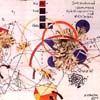
The Illustrated Book
When Lessing J. Rosenwald presented his magnificent collection of illustrated books to the Library of Congress between 1943 and 1979, it included his earliest book purchases, which were fifteenth-century German illustrated books corresponding to his interest in early woodcut prints. Rosenwald's collecting interests soon expanded from incunabula to encompass eighteenth-century French books, the works of William Blake, and the livre d'artiste.

|
Bernard Picart. Dessins pour l'Iliade d'Homère (1710). The high, almost severe, classicism of eighteenth-century art renders visible and immediate the poetry and scenes of classical western literature. (Lessing J. Rosenwald Collection) |
Rosenwald bought his books individually, and each displays his attention to superb condition and remarkable impressions of illustrations. In certain areas he bought comprehensively. A few such caches are worth special note. Rosenwald purchased an amazing number of block books--10 in number--that appeared in northern Europe about the same time as the earliest books printed from movable type. The collection also contains a 1473 printing of Speculum humanae salvationis that combines block-book printing and printing with movable type in the same book. Rosenwald's holdings contain a rich vein of William Caxton imprints, including a recently discovered Caxton indulgence that was previously unknown. Another great rarity is the only known complete copy of Braccelli's Bizarrie di varie figure printed in Italy in 1624 with extraordinary illustrations that seem to foreshadow the much later movements of cubism and surrealism. The list of twentieth-century books with special features is long and impressive. One example is a copy of the Cranach Press edition of Virgil's Les Eglogues with sketches and proofs by Aristide Maillol.
Rosenwald had an extensive collection of livres d'artiste. Since the arrival of his collection at the Library of Congress in 1979-80, the division has continued to collect materials which combine literary and pictorial expression. The essential ingredients of livres d'artiste are original graphic works, limited print runs, and careful production. There exists today considerable activity in this field, and the Library has acquired some extraordinarily fine examples of contemporary art expressed through the medium of the book.
The Rosenwald Collection brought such important livres d'artiste as Verlaine's Parallèlement illustrated by Pierre Bonnard and Picasso's illustrated edition of Balzac's Le chef-d'oeuvre inconnu. Later additions like Matisse's Jazz and a complete collection of the output of Pierre Lecuire, who works as poet, typographer, and publisher, continue the grand tradition of the livre d'artiste. Work in this field has expanded geographically, and the creativity has been boundless. In his Book 91, Keith Smith experiments with strings so that space, patterns, and shadows are formed as the viewer "reads." The American printer, artist, and binder Timothy Ely has produced a group of choice artists' books, and the division's copy of his one-of-a-kind Optical Aleutians is an example of the use of the physical book as a vehicle for contemporary creativity.
![Thumbnail image of Keith Smith's "Book 91" (Barrytown, N.Y.: Space Heater Multiples, [1982])](rat50002.jpg)
|
Keith Smith. Book 91 (Barrytown, N.Y.: Space Heater Multiples, [1982]). In this artist's book the "text" is composed of strings which move from cover to cover through the pages of the book. |

|
Timothy Ely. Optical Aleutians 2 (1987). A one-of-a-kind artist's book written in an imaginary language and printed by the author. |
This narrative has only touched on the variety of riches that the Rare Book and Special Collections Division holds. We owe the fact that the nation has such a valuable gathering of rare materials to a combination of generous donors who believed in the value of the Library of Congress as the outstanding research library in the world and a long history of Library staff members who had the talents that led them to identify and acquire rare, important, scarce, and valuable items. The Rare Book and Special Collections Division continues to this day and will continue in the future this tradition of collecting and making accessible to the public its valuable and unique resources.
To give the reader a somewhat different perspective on our holdings, we present the following list of separately maintained special collections, as well as those materials dispersed throughout the general rare collections. Accompanying each entry is a brief note describing the collection and the approximate number of items.
Rare Book and Special Collections in American Memory
Library of Congress Home Page
 Library of
Congress
Library of
Congress